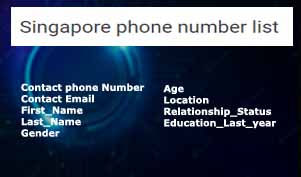The first step in their general funnel. rest of the necessary information later in the funnel. Important here is: Timing (make sure you ask for the small commitment first, then the big commitment). Depending on your customer journey, it may be best that there is a longer period in between. Social Confirmation "Other people like it, so it must be good." Suppose you want to sell your house and you need a real estate agent, then you are more likely to contact the real estate agent that your ex-neighbor recommended to you than a real estate agent that you saw in the newspaper. We call this social validation.
As humans, we tend to choose products and solutions that others choose. And not just any others, preferably others with similarities to ourselves. In the example things Singapore phone number list to of the neighbor: she looks like us because she sold a similar house. Examples of how you can apply social validation to your site include: Show a trustpilot rating on your website, after all if others give a high rating, it must be good; Show a message like "25,000 marketers already subscribed" on a newsletter signup; website, preferably with a face. This way potential customers see that people are already using your product or service just like them.
Then it must be fine, right? Social proof often goes wrong because sites 'fake' social proof. It has to be real, because if you use fake social proof and you get caught, the same thing happens as happened with Intersport: In the example above you can see that a random number was selected for the number of visitors in the top left corner. The reactions to this were, as expected, not very favorable. So don't fake it, and use real social confirmation, not a fake counter or fake reviews, but the real deal. That can sometimes take quite a bit of time and effort (especially collecting reviews), but it's definitely worth it.



